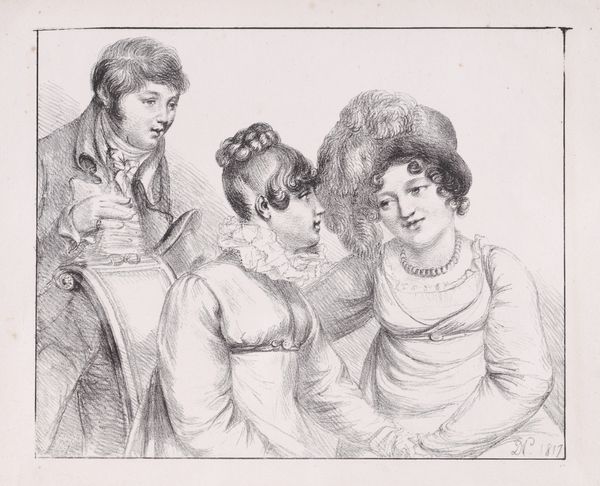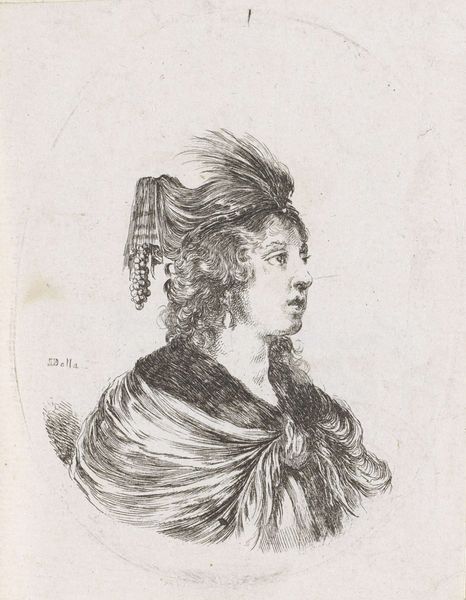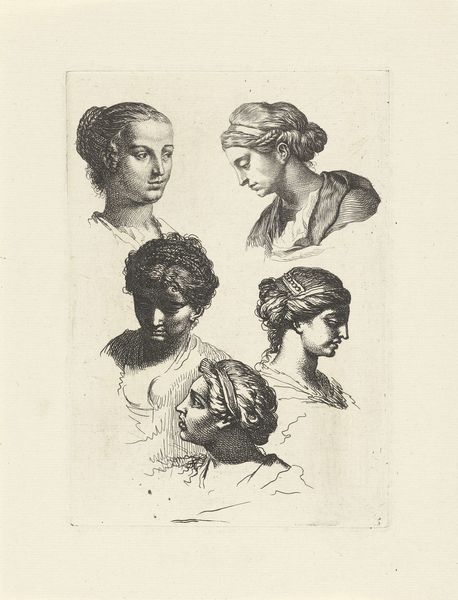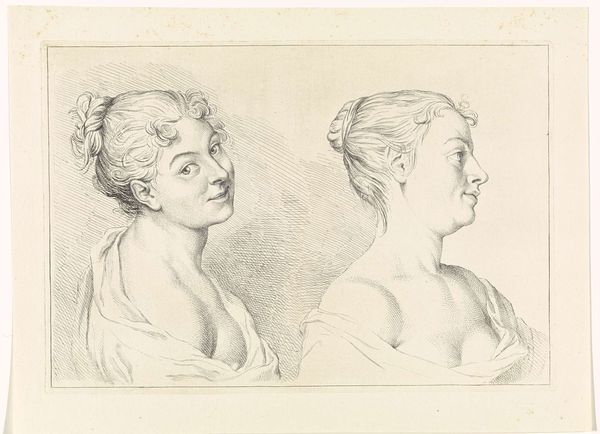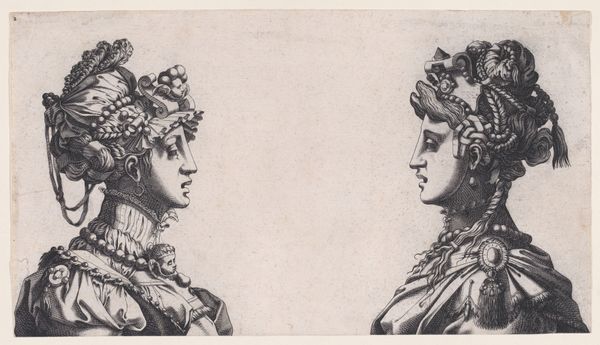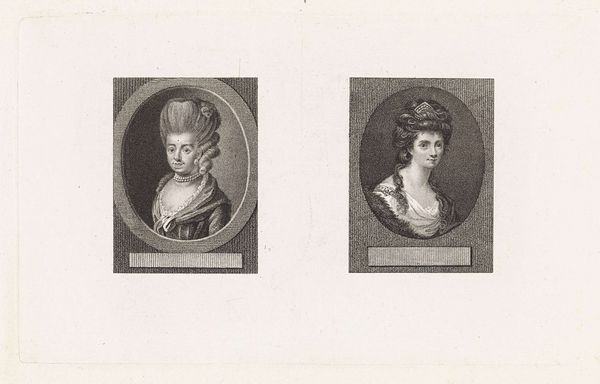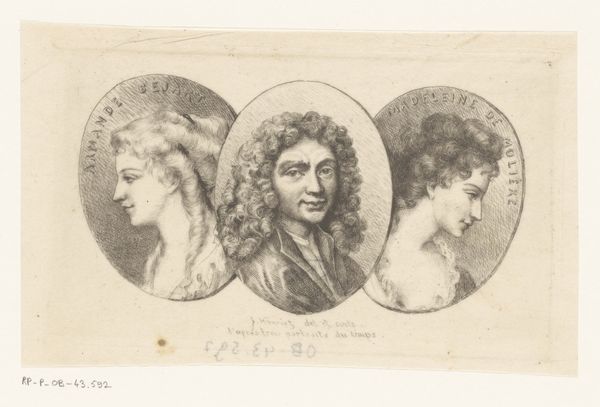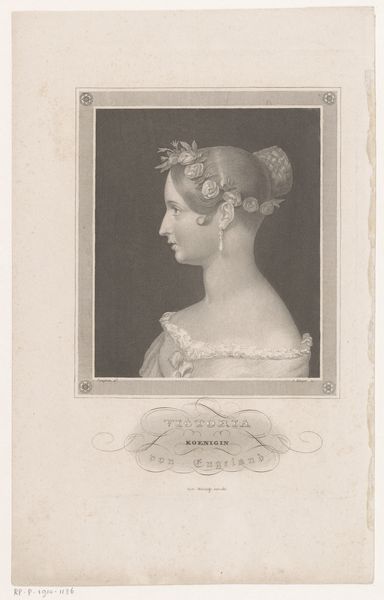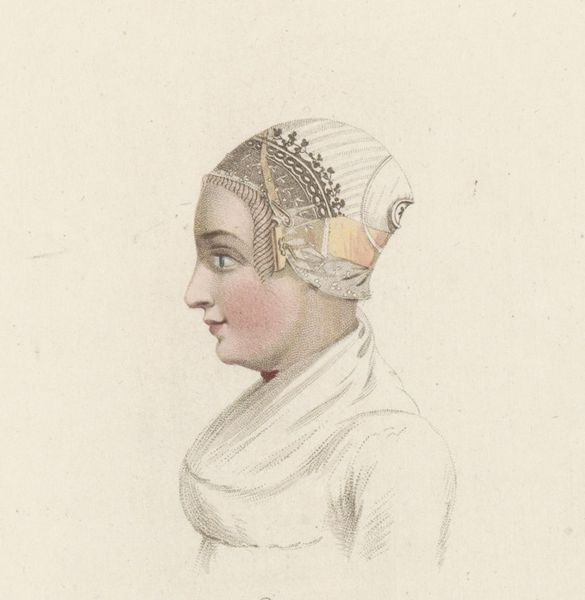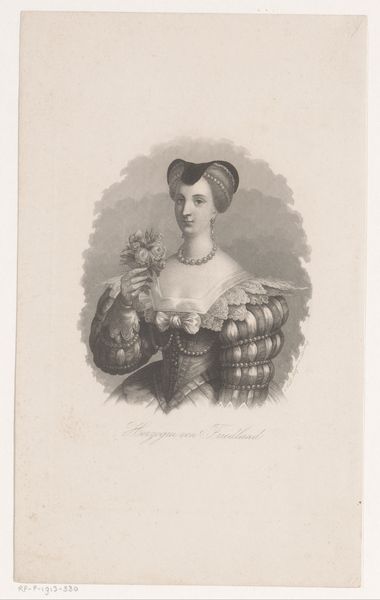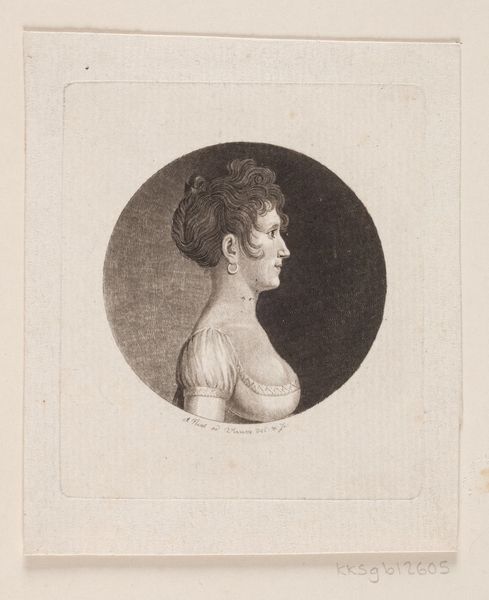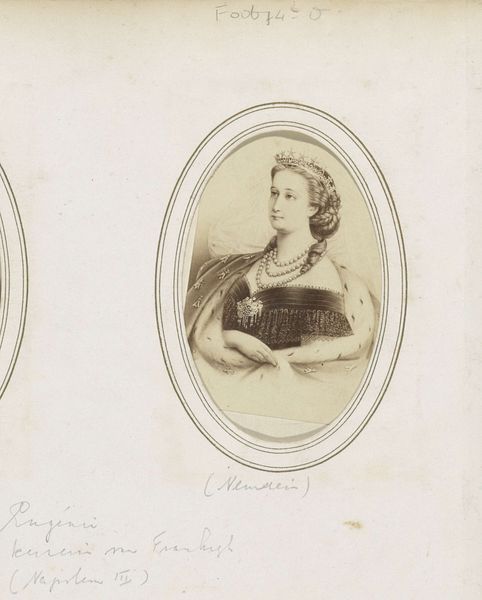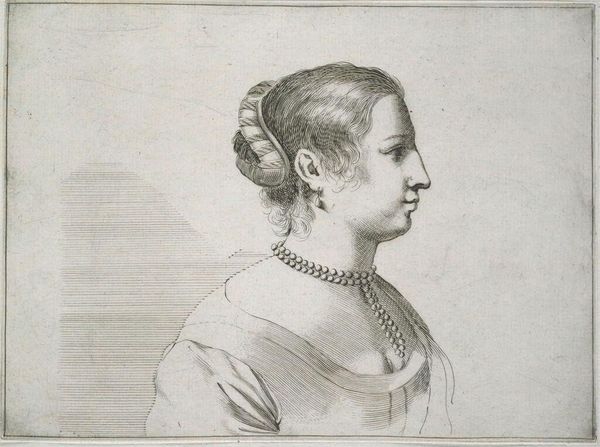
Portrait of Frau von Oppen and Her Two Daughters 1835
0:00
0:00
drawing, print, graphite
#
portrait
#
drawing
# print
#
group-portraits
#
romanticism
#
graphite
#
academic-art
#
realism
Dimensions: sheet: 10 7/16 x 14 3/8 in. (26.5 x 36.5 cm)
Copyright: Public Domain
Editor: Here we have Johann Gottfried Schadow's graphite drawing, "Portrait of Frau von Oppen and Her Two Daughters," created in 1835. It's remarkable how lifelike and serene these three women appear, considering it's "just" a drawing. I'm really struck by the tonal gradations and the delicate details in their hair and clothing. What jumps out to you? Curator: The compelling element, from a formal standpoint, resides in the geometry. Schadow has skillfully arranged these three figures in a composition of intersecting lines and shapes. Observe the parallel angles of their gazes and the repetition of curvilinear forms in their hairstyles which create a rhythmic visual flow across the picture plane. Note the strategic deployment of chiaroscuro, with the carefully modulated shading lending volume and dimension to the figures. What effect does the artist obtain with this conscious strategy? Editor: It makes them seem incredibly present and solid, even though it’s just graphite on paper. It gives the drawing a real sense of depth and almost sculptural presence, and grounds them. Curator: Precisely. The material of graphite, manipulated with such dexterity, transcends its inherent limitations. The varying pressures and layering techniques suggest an interest in materiality itself. The print showcases realism while also romanticising its subject in that softness of line work. We cannot separate line from tone. Look at that shadow to the left... what effect does the gradation do for the image? Editor: It softens and gives even more form to the woman and sets her apart as the only woman looking outside of her internal familial world, giving her purpose perhaps? So it's all connected, line, tone, shape to suggest her role and feeling. I will need to view works like this more consciously. Curator: Indeed. Formal elements serve not as mere decoration, but as the very architecture of meaning. Through understanding those aspects of an image one can begin to read beyond simply what is represented to how the representation shapes one's engagement with the image. Editor: I can see that now. Thanks, that was a whole new perspective!
Comments
No comments
Be the first to comment and join the conversation on the ultimate creative platform.
